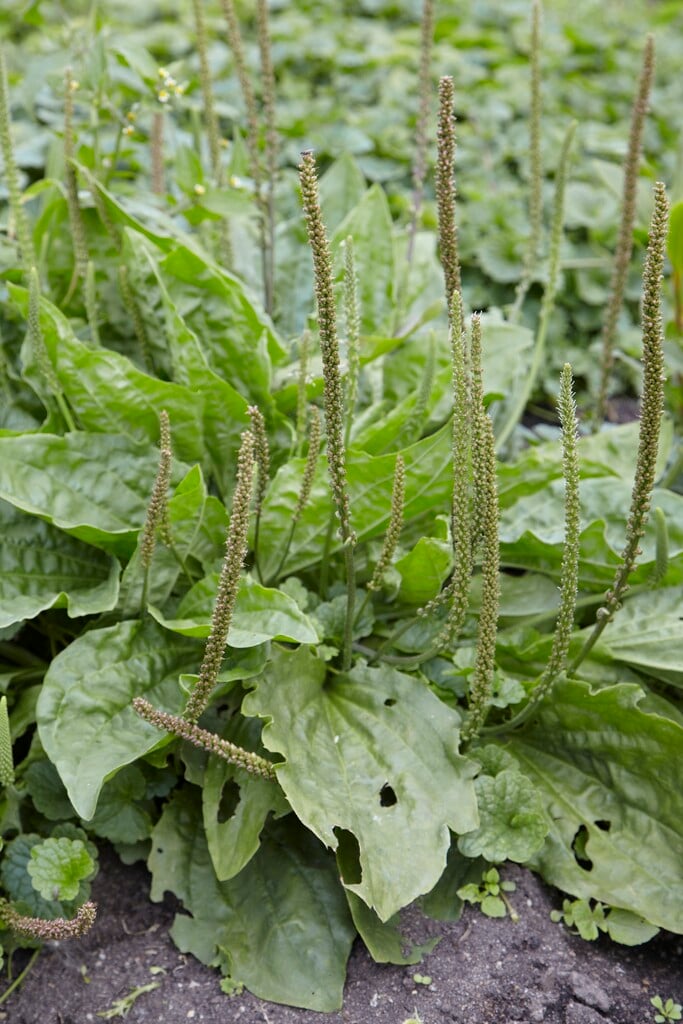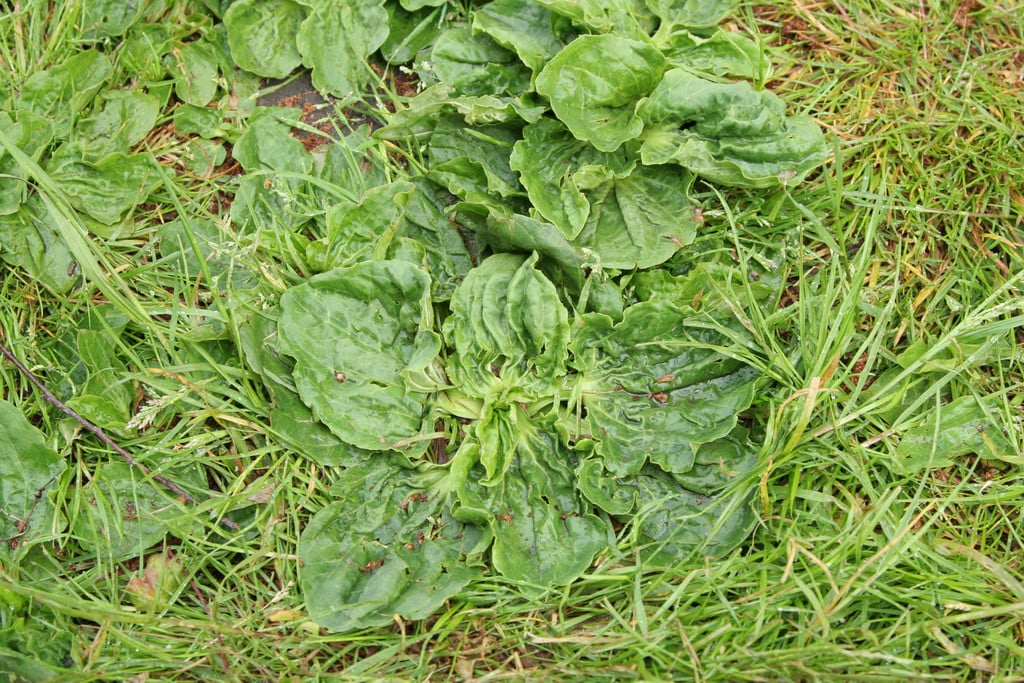Plantago major
common plantain
A low-growing herbaceous perennial with a rosette of broad, oval, dark green leaves, with pale green veins and stems. Produces leafless spikes of small, tightly clustered brownish purple flowers on upright stems up to 20cm high
Other common names
common plantaingreater plantain
see morehealing blade
lamb's foot
lark seed
white man's foot
white man's footprint
Size
Ultimate height
0.1–0.5 metresTime to ultimate height
1 yearUltimate spread
0.1–0.5 metresGrowing conditions
Moisture
Moist but well–drainedpH
Acid, Alkaline, NeutralColour & scent
| Stem | Flower | Foliage | Fruit | |
| Spring | Green | |||
|---|---|---|---|---|
| Summer | Purple Brown | Green | ||
| Autumn | Green | |||
| Winter | Green |
Position
- Full sun
- Partial shade
Aspect
East–facing or South–facing or West–facing
Exposure
Exposed or Sheltered Hardiness
H7Botanical details
- Family
- Plantaginaceae
- Native to GB / Ireland
- Yes
- Foliage
- Evergreen
- Habit
- Clump forming
- Genus
A genus of 200 species of flowering plants, mainly herbaceous but with a small number of subshrubs, and often classed as a weed. Broad or narrow foliage with long stalks of inconspicuous flowers that are wind-pollinated
- Name status
Correct
How to grow
Cultivation
Most vigorous in open, sunny sites, but will tolerate a range of positions and soil types, including heavy and compacted soils. Spreads rapidly, generally considered a weed.
Propagation
Self- and wind pollinated, propagates by seed produced prolifically through the growing season.
Suggested planting locations and garden types
- Wildlife gardens
Pruning
Remove before seeding to prevent spreading
Pests
May be susceptible to aphids and red spider mites
Diseases
May be susceptible to downy mildews and powdery mildews
Love gardening
Sign up to receive regular gardening tips, inspiration, offers and more
View our Privacy Policy
Get involved
The Royal Horticultural Society is the UK’s leading gardening charity. We aim to enrich everyone’s life through plants, and make the UK a greener and more beautiful place.

